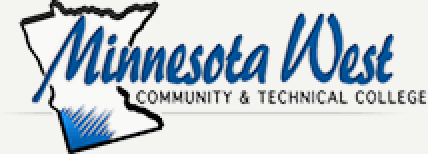CHEM 2202 Organic Chemistry II
CHEM 2202: Organic Chemistry II
Description
Organic Chemistry II continues CHEM 2201 with emphasis on multistep organic synthesis, orbital interactions, structure determination, and reaction classes including addition, nucleophilic addition-elimination, aromatic substitution, pericyclic reactions, free radical reactions, and polymerization. This course is for students majoring in science, pre-engineering, or pre-health (medicine, pharmacy, veterinary medicine). This course includes a lab.
Credits
5
Prerequisite
CHEM 2201
Corequisite
None
Topics to be Covered
1. Radical reactions
2. Conjugation, resonance, and dienes
3. Benzene and aromatic compounds
4. Reactions of aromatic compounds
5. Carboxylic acids and the acidity of the O−H bond
6. Carbonyl chemistry: organometallic reagents, oxidation and reduction
7. Aldehydes and ketones: nucleophilic addition
8. Carboxylic acids and their derivatives: nucleophilic acyl substitution
9. Substitution reactions of carbonyl compounds at the α carbon
10. Carbonyl condensation reactions
11. Amines
12. Amino acids and proteins
13. Carbohydrates
14. Lipids
15. Carbon-carbon bond-forming reactions in organic synthesis
16. Pericyclic reactions
17. Synthetic polymers
Learning Outcomes
1. Predict properties and reactivity of organic molecules using concepts of molecular structure, formal charge, and resonance
2. Translate between compound names and representations of structure
3. Create and employ 3-dimensional structures to determine the constitutional and stereochemical isomeric relationships between molecules
4. Identify various functional groups within complex molecules, correlate physical properties with functional group structure, and predict relevant reactions each functional group will undergo
5. Predict the products of oxidation, reduction, aromatic substitution, nucleophilic acyl addition, nucleophilic acyl substitution, and alpha carbon (enol and enolate) reactions through the application of thermodynamic and kinetic principles
6. Create logical synthetic strategies by combining reactions into practical multi-step sequences
7. Propose reaction mechanisms using the curved-arrow formalism
8. Employ data from NMR, IR, and UV-VIS spectroscopy and mass spectrometry to identify compounds and demonstrate an understanding of how each of these analytical techniques work
9. Identify structures and functions of macromolecules
10. Plan organic chemical reactions using proper reaction stoichiometry calculations
11. Perform successful organic chemical reactions with hands-on use of reaction glassware and equipment, practicing proper laboratory technique to maximize product yield and purity
12. Separate and purify chemical compounds
13. Determine the identity of organic samples through physical and spectroscopic methods
14. Determine the qualitative and quantitative purity of organic samples through physical and spectroscopic methods
15. Model the scientific method by performing inquiry- or research-based laboratory experiments or projects in which the student makes decisions regarding experimental design and execution
16. Demonstrate responsible laboratory safety and waste handling practices including the use of proper fume hoods or fume extraction for chemicals that emit hazardous vapors
17. Communicate the procedure, results, and relative success of an experiment with respect to the experimental objectives in the form of a laboratory notebook, written reports, or verbal presentation
Credit Details
Lecture: 3
Lab: 2
OJT: 0
MnTC Goal Area(s): Goal Area 03 - Natural Sciences
Minnesota Transfer Curriculum Goal Area(s) and Competencies
Goal Area 03: Natural Sciences
1. Demonstrate understanding of scientific theories.
2. Formulate and test hypotheses by performing laboratory, simulation, or field experiments in at least two of the natural science disciplines. One of these experimental components should develop, in greater depth, students’ laboratory experience in the collection of data, its statistical and graphical analysis, and an appreciation of its sources of error and uncertainty.
3. Communicate their experimental findings, analyses, and interpretations both orally and in writing.
4. Evaluate societal issues from a natural science perspective, ask questions about the evidence presented, and make informed judgments about science-related topics and policies.
Transfer Pathway Competencies
Chemistry Transfer Pathway AS
Organic Chemistry II
Required Course Competencies
1. Predict properties and reactivity of organic molecules using concepts of molecular structure, formal charge, and resonance
2. Translate between compound names and representations of structure
3. Create and employ 3-dimensional structures to determine the constitutional and stereochemical isomeric relationships between molecules
4. Identify various functional groups within complex molecules, correlate physical properties with functional group structure, and predict relevant reactions each functional group will undergo
5. Predict the products of oxidation, reduction, aromatic substitution, nucleophilic acyl addition, nucleophilic acyl substitution, and alpha carbon (enol and enolate) reactions through the application of thermodynamic and kinetic principles
6. Create logical synthetic strategies by combining reactions into practical multi-step sequences
7. Propose reaction mechanisms using the curved-arrow formalism
8. Employ data from NMR, IR, and UV-VIS spectroscopy and mass spectrometry to identify compounds and demonstrate an understanding of how each of these analytical techniques work
9. Identify structures and functions of macromolecules
Organic Chemistry 1 & 2 Lab Competencies
1. Plan organic chemical reactions using proper reaction stoichiometry calculations
2. Perform successful organic chemical reactions with hands-on use of reaction glassware and equipment, practicing proper laboratory technique to maximize product yield and purity
3. Separate and purify chemical compounds
4. Determine the identity of organic samples through physical and spectroscopic methods
5. Determine the qualitative and quantitative purity of organic samples through physical and spectroscopic methods
6. Model the scientific method by performing inquiry- or research-based laboratory experiments or projects in which the student makes decisions regarding experimental design and execution
7. Demonstrate responsible laboratory safety and waste handling practices including the use of proper fume hoods or fume extraction for chemicals that emit hazardous vapors
8. Communicate the procedure, results, and relative success of an experiment with respect to the experimental objectives in the form of a laboratory notebook, written reports, or verbal presentation
